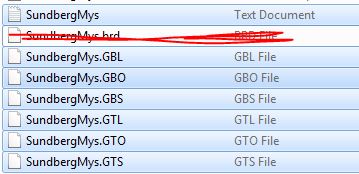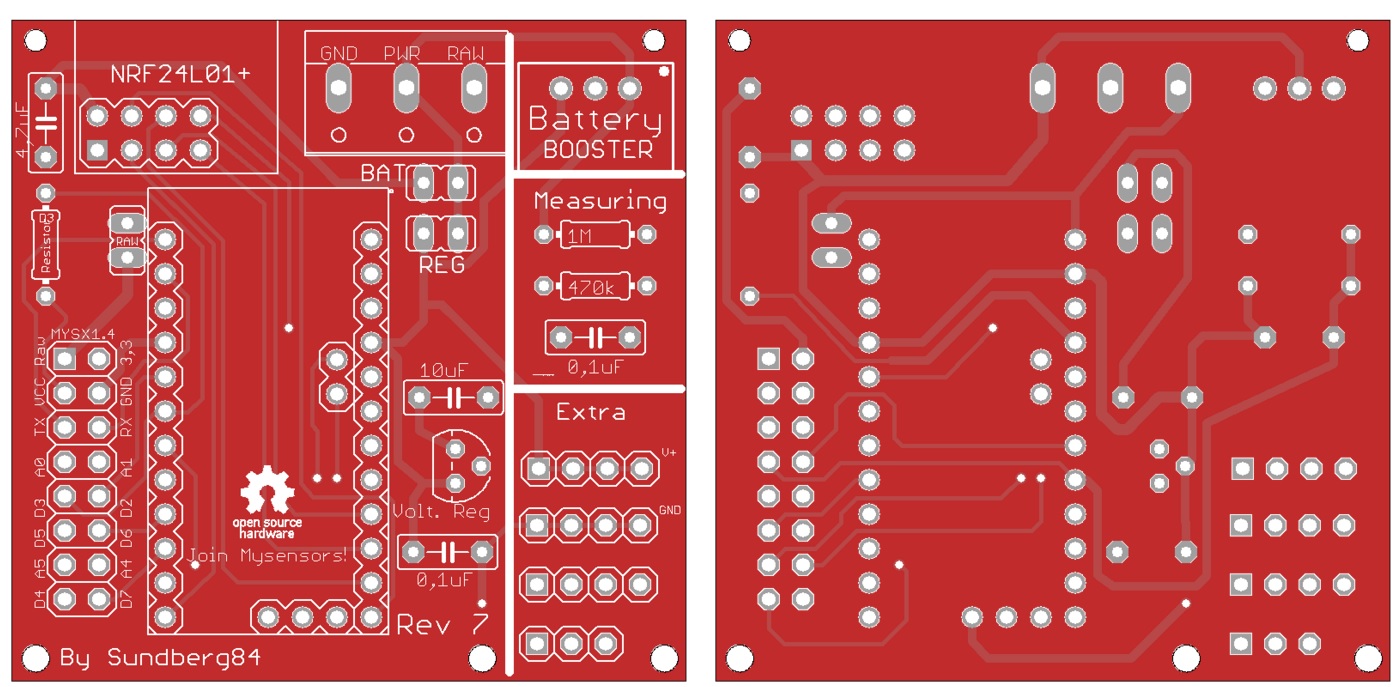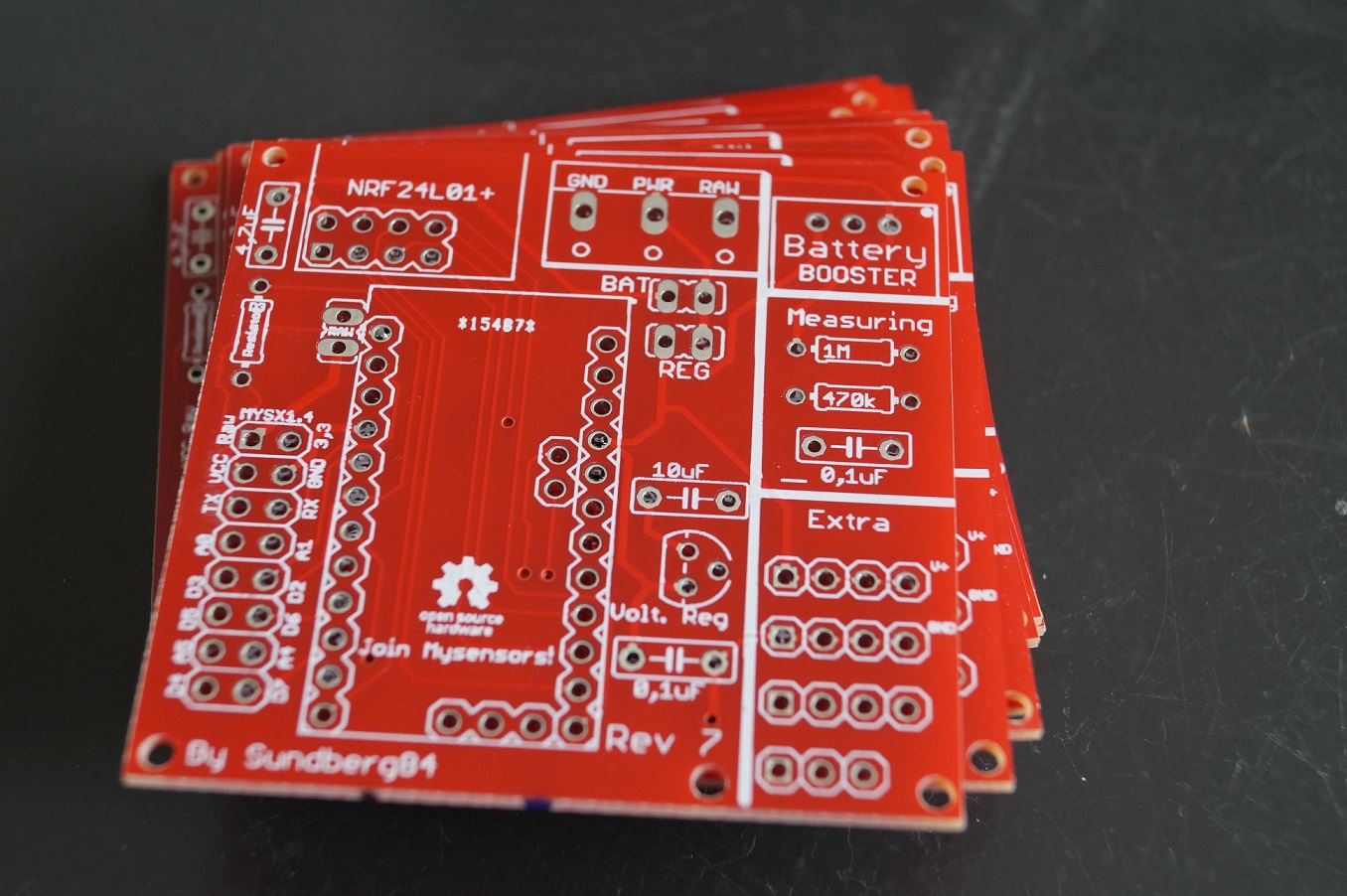💬 Easy/Newbie PCB for MySensors
-
-
Hi, I'm one of these Newbies this board is aimed for.
If I would like to order this board from say http://dirtypcbs.com/
They want me to upload a file, but I don't know which one?///Peter!
-
I have not bought my PCBs from dirtypcs.com before, so i asked them how to do this. If possible to add it without buying. If thats not possible i will consider buying from them next time offcourse! (Final rev is some weeks ahead i think).
These are the files you should compress to .rar /.zip and upload.

-
I ordered my pcbs from dirtypcbs (it was my first order) and was also quite confused.
After failing to add the rar-file (I got an error-message about the file format), I only uploaded the .brd-file and that was accepted.
After your comment sundberg, I am very curious to see how the boards turned out and if they are usable.
They were shipped on Monday, so it will be a few weeks before they reach me thought. -
@BastienVH - Thank you for your input.
Ok so dirtypcb doesnt accept gerber files but raw eagles .brd files?
That sounds a bit worrying because the export to those gerberfiles moves some labels and stuff around.
I have adjusted the .brd so the gerber files are correct and should be used.I hope it works out for you! Let us know!
No answer at this time from dirtypcbs -
I checked their website again and you should be able to upload de gerber files in a zip-file.
I uploaded a rar, which was not recognized, I guess.
After that, I uploaded the board-file and it generated gerberfiles based on that brd-file.
This is a screenshot of the board generated by dirtypcbs on my order page.
We'll have to wait and see how they turn out.
-
@BastienVH - It looks right! If the manufacturing process works out the boards are going to be good!
-
I have uploaded my boards at DirtyPCB in ZIP archives with the GERBER files, so this certainly works. Nice to hear that they also accepted the Eagle .brd file. So far I thought only OSH Park accepted Eagle 7.3 files, so maybe I should just try and see what they make of it.
@BastienVH @sundberg84 : from the moment DitryPCB shows you a correct PCB image, you can be pretty sure the boards will turn out fine. But as with all lithographic processes, you always need to check the boards for imperfections if you use very dense layouts. In the case of this layout I see no reason to worry about that. And the red board colour is really cool :-) -
I got reply from dirtypcbs.com and in their new page it was possible to upload and sell PCBs.
I have now uploaded it, and waiting for approval. -
I have uploaded my boards at DirtyPCB in ZIP archives with the GERBER files, so this certainly works. Nice to hear that they also accepted the Eagle .brd file. So far I thought only OSH Park accepted Eagle 7.3 files, so maybe I should just try and see what they make of it.
@BastienVH @sundberg84 : from the moment DitryPCB shows you a correct PCB image, you can be pretty sure the boards will turn out fine. But as with all lithographic processes, you always need to check the boards for imperfections if you use very dense layouts. In the case of this layout I see no reason to worry about that. And the red board colour is really cool :-)@GertSanders
I'll check when they arrive.
The red is really nice but was actually a mistake, I didn't check the board color setting because I was so excited to order this PCB! ;-)
You get a choice of red, yellow, green, blue, black or white. All without extra cost, which is nice. -
@sundberg84, Thanks for the simple design.
Can this board be ordered from dirtypcbs.com? or should we wait until we hear from you?
-
I have uploaded it to dirtypcbs and waiting for approval.
-
I have uploaded it to dirtypcbs and waiting for approval.
-
@ar91 This is not my upload, but it looks right.
Its not the latest Rev 7 but it Rev6 was working so I think its safe to order.If you wait and order from my upload you are also contributing to MySensors as i will donate that small amount that goes to the author when buying.
-
@ar91 This is not my upload, but it looks right.
Its not the latest Rev 7 but it Rev6 was working so I think its safe to order.If you wait and order from my upload you are also contributing to MySensors as i will donate that small amount that goes to the author when buying.
@sundberg84 Sure will wait for your confirmation.
-
Nice job. I will wait as well .
-
I just received my order from Dirtypcbs. The protopack I ordered had 11 boards, so that's nice.
They took 10 days to arrive in Belgium.
From first glance, it looks like they's work, but I'll have to test it this weekend to be sure.
Here's a picture.

-
@BastienVH izz naaiss !!!
-
@sundberg84
I'm waiting your upload with impatience. -
@allmp13 sorry, still no answer from dirtypbs - status: waiting for approval
If you are impatient you can always use the link above... or upload the gerber files.
